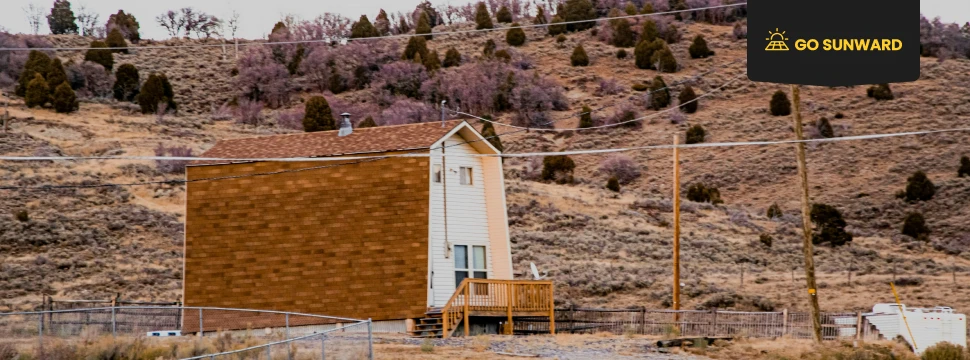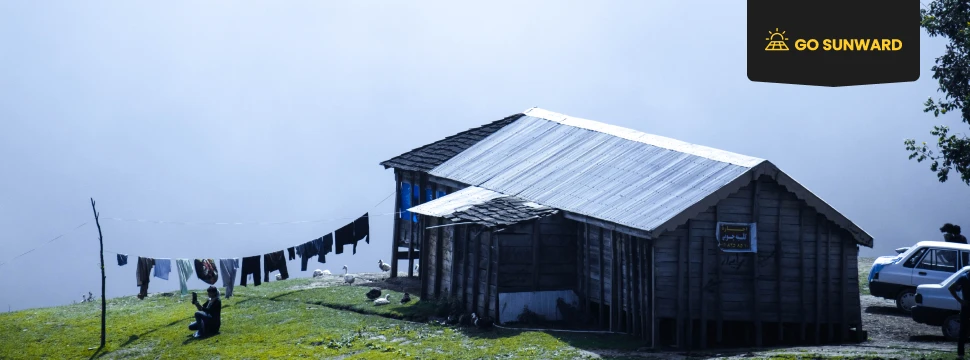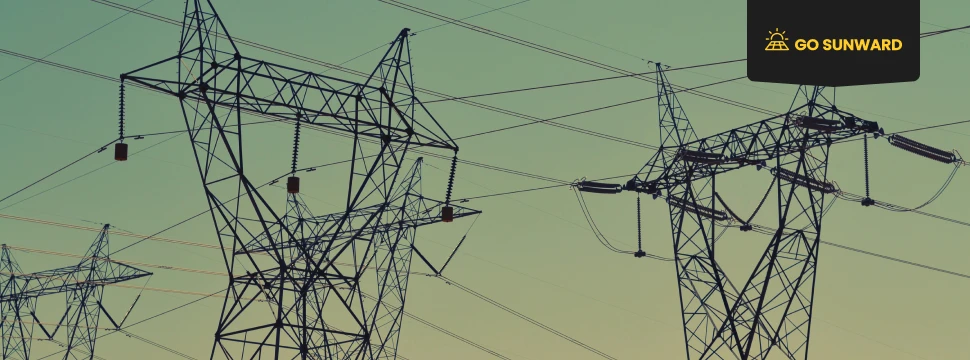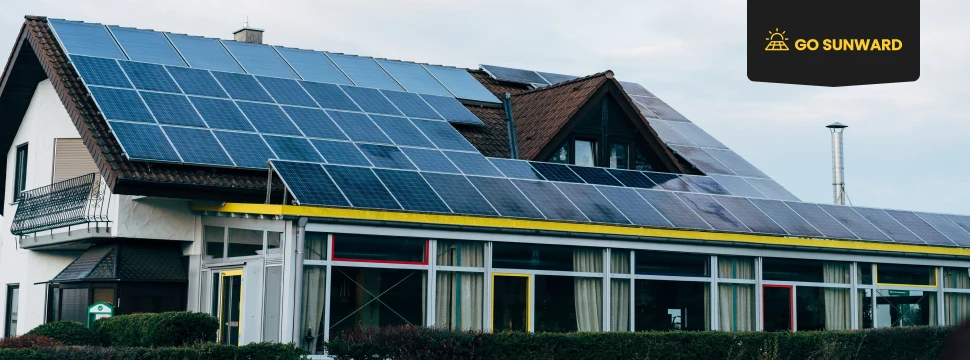8 Insane Off The Grid Homes To Inspire You [With Images]
In a world increasingly driven by urbanization and modern conveniences, the allure of living off the grid has grown stronger than ever. These remarkable off-the-grid homes stand as testaments to human ingenuity, showcasing innovative designs and sustainable living practices that not only reduce our environmental footprint but also inspire a deeper connection with nature.
From remote and rural cabins nestled in the wilderness to futuristic eco-villages, this article takes you on a captivating journey through eight insane off-the-grid homes that will undoubtedly ignite your imagination and kindle the desire for a more self-reliant lifestyle. Join us to explore these remarkable examples of real estate, accompanied by awe-inspiring images that illustrate the beauty and creativity of off-grid living. Go here for more on off-grid vs on grid solar.
Off The Grid Homes: The Basics
Before we delve into the awe-inspiring off-the-grid homes, let’s first discuss what makes a home ‘off-grid’.
At its core, an off-grid lifestyle represents a departure from traditional, grid-dependent living, where homes rely on public utilities such as electricity, water supply, and sewage systems. Instead, off-grid living is characterized by self-sufficiency and sustainability.
Energy Independence: One of the fundamental aspects of off-grid living is achieving energy independence. Off-the-grid homes typically generate their electricity through renewable sources like solar panels, wind turbines, or micro-hydro systems. This autonomy from the electrical grid not only reduces reliance on fossil fuels but also allows residents to harness low-carbon, green sources to meet their energy needs and encourages super efficient energy practices.
Water Management: Off-grid living often entails simple but innovative water management systems. Residents collect rainwater, use water filtration systems, and implement efficient water conservation practices to ensure a sustainable and reliable water supply. This approach not only reduces environmental impact but also promotes water self-sufficiency.
Waste Management: To minimize their ecological footprint, off-grid homeowners often adopt eco-friendly waste management practices. This includes composting toilets, greywater recycling, and responsible waste disposal to reduce environmental impact and promote a cleaner, healthier environment.
Sustainable Food Production: Many off-grid enthusiasts prioritize sustainable food production by cultivating their land, raising livestock, and even embracing innovative techniques like aquaponics or hydroponics. These methods not only provide a consistent and high quality source of fresh, organic produce but also reduce reliance on external food suppliers, fostering a profound sense of self-sufficiency and resilience in off-grid communities.
With these fundamental concepts in mind, let’s now dive into the fascinating world of off-the-grid homes, where innovation, creativity, and sustainability converge to create awe-inspiring living spaces.
8 Insane Off The Grid Homes To Inspire You
#1: The Waternest 100
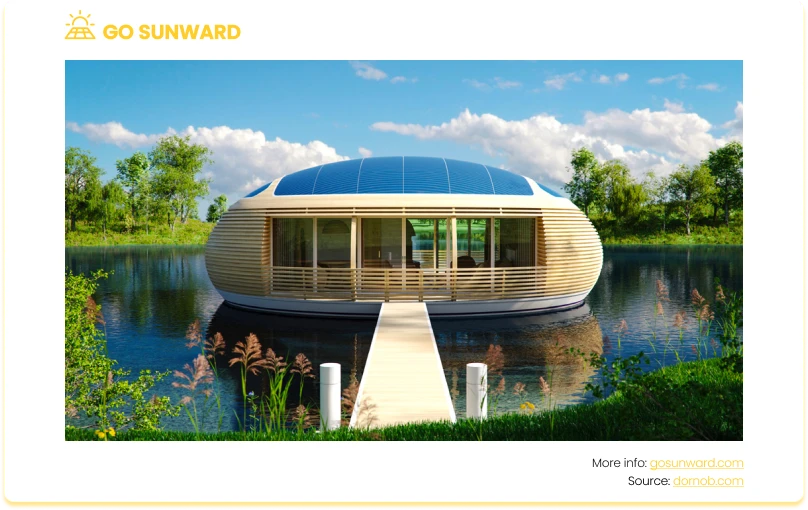
This innovative floating roundhouse is entirely powered by solar energy and is designed to be fully recyclable. The house, situated on water, features a unique circular design with a curved roof adorned with solar panels, making it an energy-efficient and environmentally friendly dwelling. The solar panels capture sunlight and convert it into electricity to power the home’s various systems and appliances, ensuring it operates off-grid and with minimal environmental impact.
What sets this roundhouse apart is its commitment to sustainability. Not only is it powered by renewable energy, but it is also constructed with recyclable materials, emphasizing a cradle-to-cradle design approach. This means that at the end of its lifecycle, the house can be disassembled, and its components reused or recycled, reducing waste and promoting a circular economy.
#2 ZeroHouse
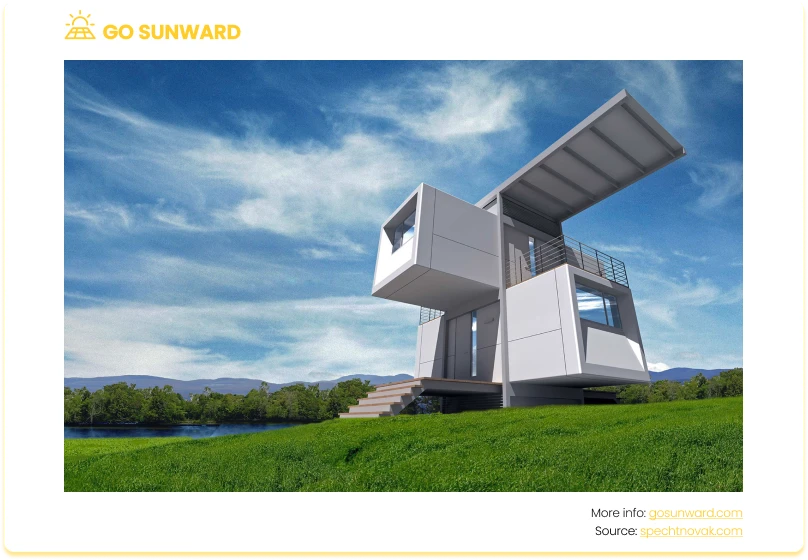
ZeroHouse perfectly embodies the principles of off-grid living. Designed by Specht Architects, this innovative home aims to achieve complete self-sufficiency by harnessing renewable energy sources, optimizing resource usage, and minimizing its environmental impact. The design integrates solar panels and advanced battery storage to generate and store electricity, ensuring uninterrupted power supply while reducing reliance on external grids. Moreover, the use of energy-efficient building materials and intelligent systems enhances energy conservation, aligning seamlessly with the core tenets of off-grid living.
Water self-sufficiency is another hallmark of this off the grid home. Its rainwater harvesting system and advanced water filtration technology enable residents to collect, treat, and utilize rainwater for various purposes, including drinking, bathing, and irrigation.
#3 Finca Bellavista Treehouse Community
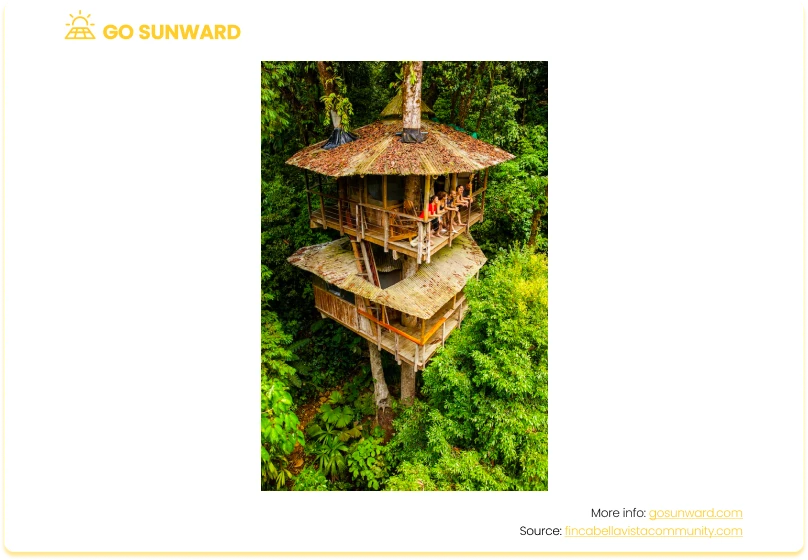
The Finca Bellavista Treehouse Community in Costa Rica is a remarkable example of off-grid living in a lush and tropical setting. The off grid treehouse homes are elevated amid the treetops, minimizing disruption to the surrounding ecosystem. Residents of this community embrace self-sufficiency by harnessing renewable energy sources such as solar panels and micro-hydro systems, ensuring they can access electricity without relying on conventional power grids.
Water management is another vital aspect of off-grid living at Finca Bellavista. Residents employ rainwater harvesting techniques to collect and purify water, reducing their dependence on external water supplies. Furthermore, sustainable agriculture and permaculture practices are prevalent, enabling residents to cultivate their food while preserving the natural biodiversity of the rainforest.
#4 Eterea Hideaway
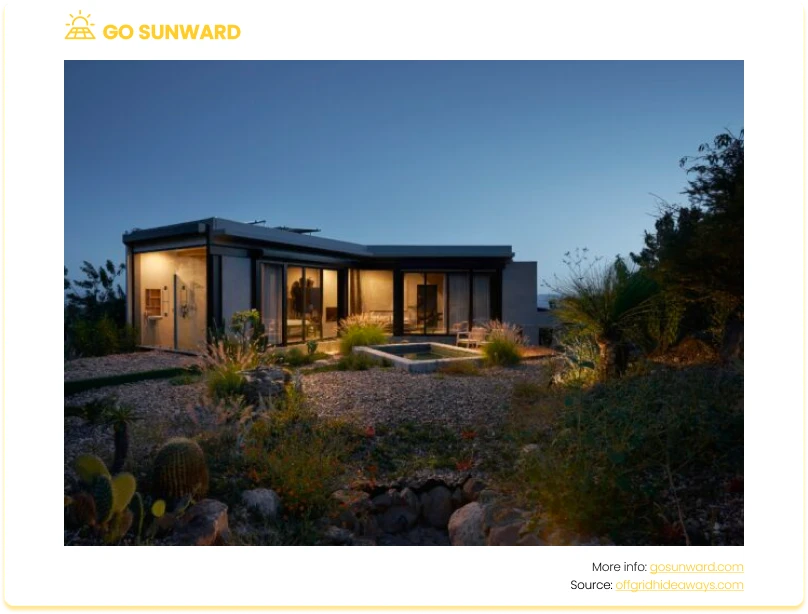
Eterea Hideaway in Mexico is a prime example of off-grid living immersed in the stunning natural landscapes of the Yucatan Peninsula. Eterea Hideaway aligns perfectly with the principles of off-grid living by relying on renewable energy sources such as solar panels to power the entire structure, ensuring uninterrupted electricity without dependence on traditional grids.
Water management is another vital aspect of off-grid living at Eterea Hideaway. The property utilizes rainwater harvesting systems and advanced water filtration to provide a consistent supply of clean water for various needs, further enhancing its self-sufficiency. Moreover, the hideaway’s sustainable architecture and minimalist design minimize its ecological footprint, fostering a connection with the natural surroundings.
#5 Ecocapsule
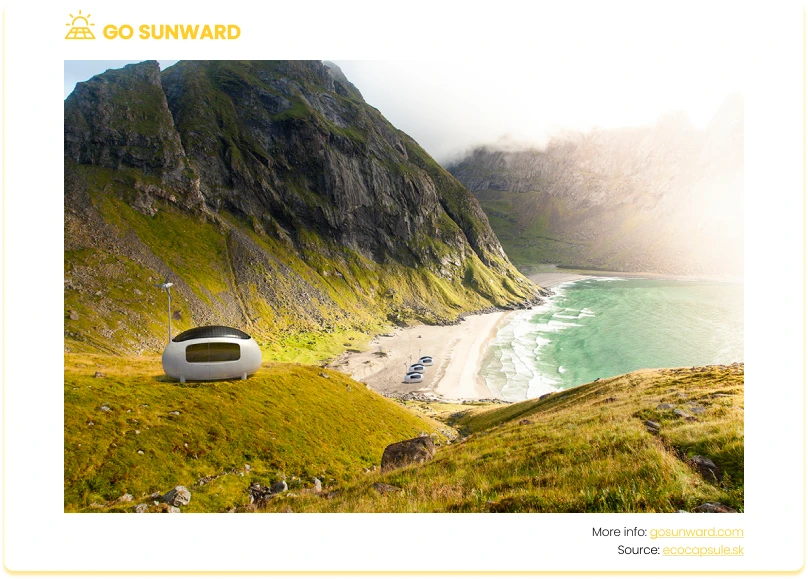
The Ecocapsule is a revolutionary off-grid home designed to provide self-sufficiency and sustainability in a compact, mobile package. Its innovative design incorporates solar panels and a retractable wind turbine to generate renewable energy, making it completely energy-independent. Additionally, the Ecocapsule features a rainwater harvesting system and built-in water filtration, ensuring a constant supply of purified water for various needs, further enhancing its self-sufficiency.
With its compact and transportable design, the Ecocapsule is well-suited for remote and ever-changing off-grid environments, offering freedom and mobility for those seeking an independent lifestyle.
#6 Freedom Cove
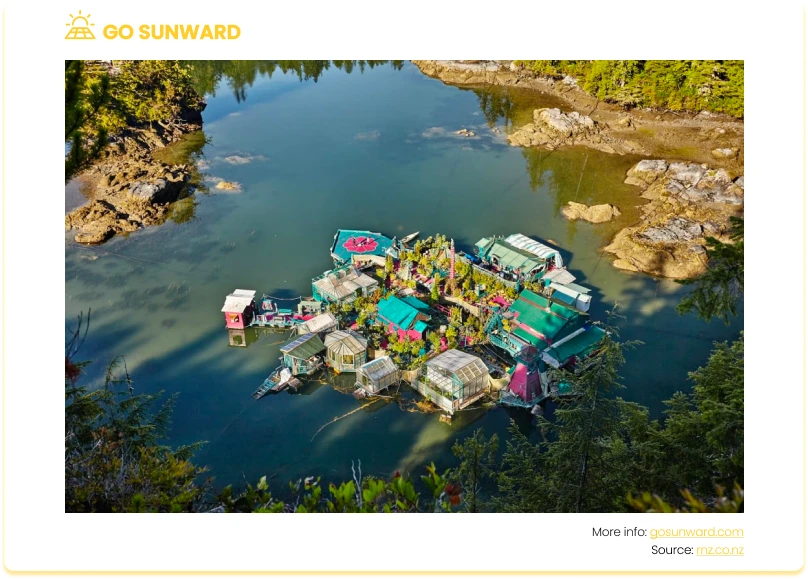
Freedom Cove is located in the waters of Cypress Bay in British Columbia, Canada. It comprises a collection of floating platforms, artistically adorned with colorful buildings, gardens, and greenhouses. Off-grid living is at its core, as Freedom Cove generates its electricity through a combination of solar panels and micro-hydro turbines, ensuring a constant power supply while minimizing environmental impact.
Moreover, the residents of this off grid home embrace a sustainable lifestyle by practicing aquaculture and cultivating a diverse array of produce in their lush gardens, offering a model for sustainable food production.
#7 Gawthorne’s Hut
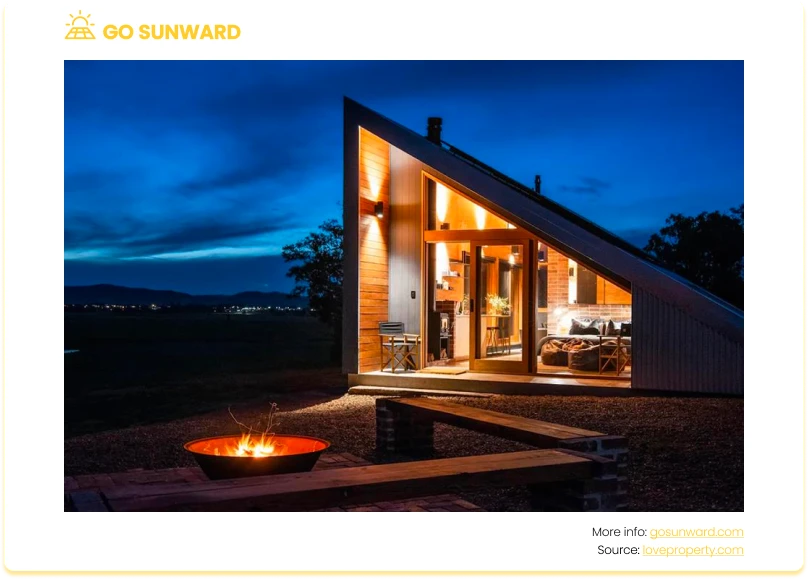
Gawthorne’s Hut, designed by Cameron Anderson Architects, exemplifies the essence of off-grid living in a rugged and remote Australian landscape. This unique structure is a contemporary interpretation of a traditional shepherd’s hut. Gawthorne’s Hut relies on solar panels and battery storage to generate and store electricity, ensuring a reliable power supply without any connection to conventional grids. The compact design minimizes its environmental impact while maximizing energy efficiency, reflecting the core principles of off-grid living.
Furthermore, the hut is thoughtfully designed to embrace water self-sufficiency through rainwater harvesting and filtration systems, reducing reliance on external water sources.
#8 La Cabin, Canada
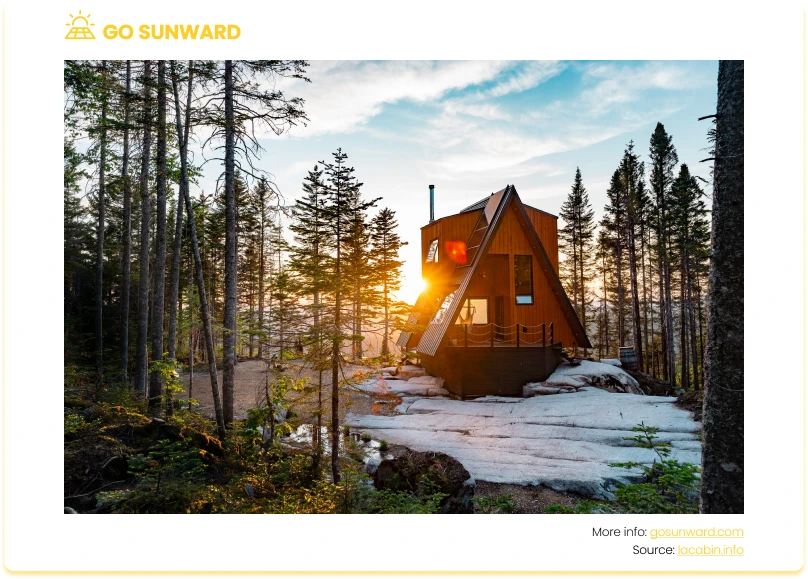
La Cabin is a striking example of off-grid living in the heart of nature, situated in Quebec, Canada. The cabin’s compact design maximizes energy efficiency and minimizes its environmental impact, showcasing the essence of off-grid living. It operates entirely off the grid, relying on solar panels to generate electricity and maintain a comfortable and modern lifestyle while reducing its carbon footprint. Its cooling is powered by propane and a wood stove provides heating.
Water self-sufficiency is also a hallmark of La Cabin. The cabin utilizes rainwater harvesting systems and advanced water filtration techniques, providing residents with a consistent supply of purified water for various needs.
Get your tool belt out if you’re after a green future as these DIY solar homes won’t be easy to create.

